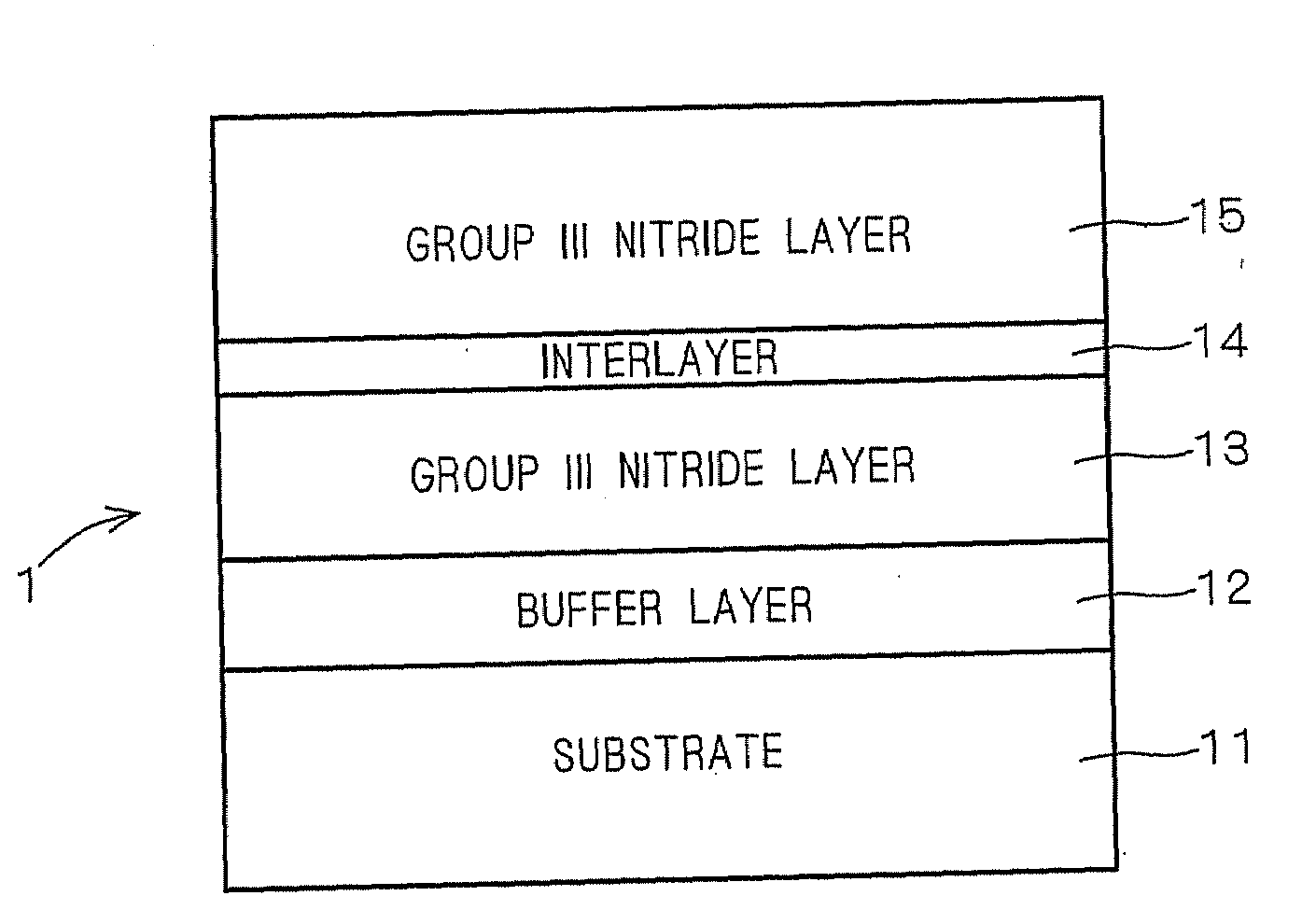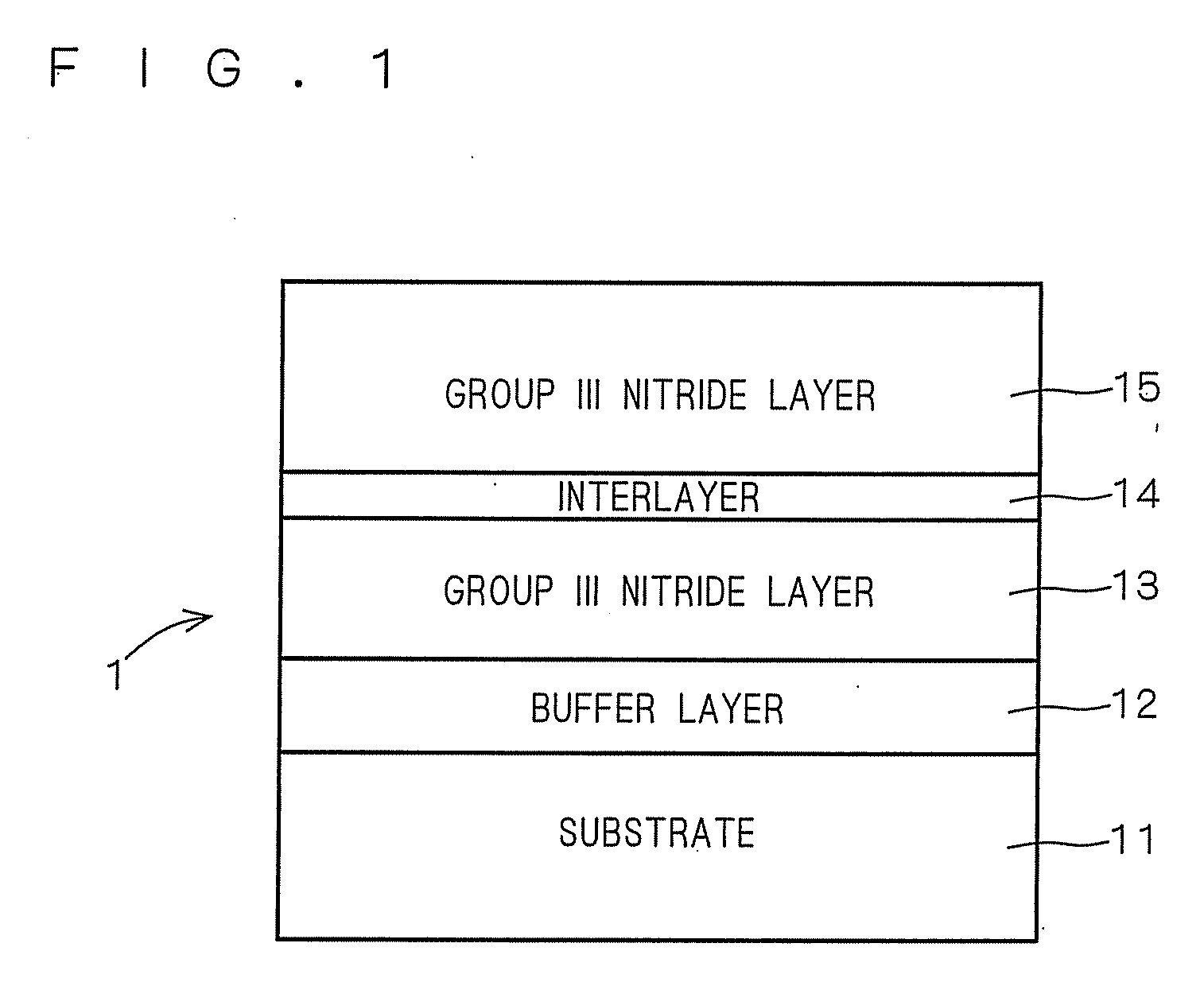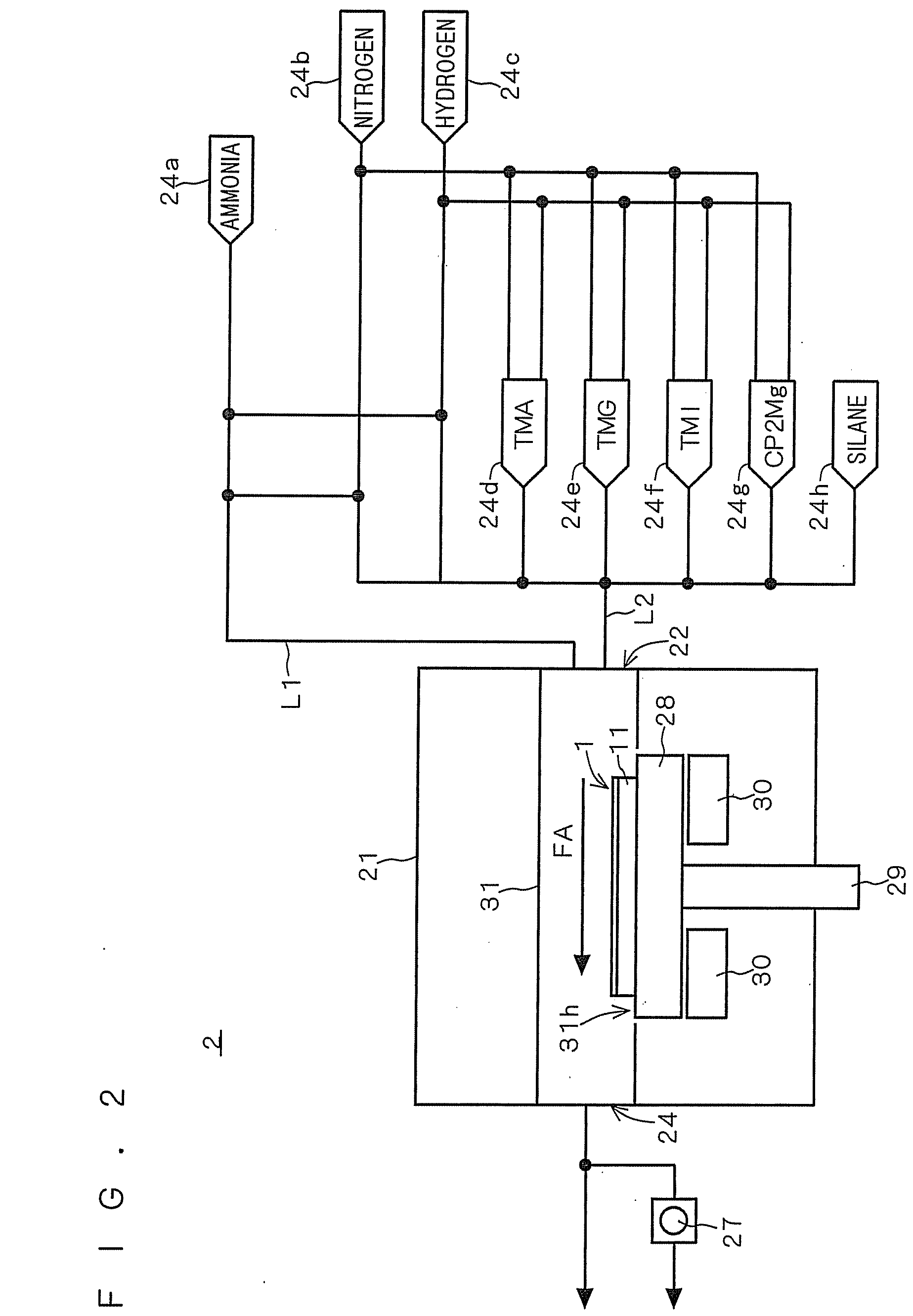Epitaxial wafers, method for manufacturing of epitaxial wafers, method of suppressing bowing of these epitaxial wafers and semiconductor multilayer structures using these epitaxial wafers
a technology of epitaxial wafers and epitaxial layers, which is applied in the direction of polycrystalline material growth, crystal growth process, transportation and packaging, etc., can solve the problems of difficult to grow large-size bulk single-crystal gan-based compound semiconductors, disturbance of vacuum chuck properties, and inability to obtain high-quality epitaxial layers, etc., to achieve the effect of suppressing the bowing of epitaxial wafers
- Summary
- Abstract
- Description
- Claims
- Application Information
AI Technical Summary
Benefits of technology
Problems solved by technology
Method used
Image
Examples
example 1
[0045]A method for manufacturing an epitaxial wafer 100 including a GaN interlayer, which is grown at 500° C. and does not substantially contain Al according to Example 1 is described with reference to the process flow chart shown in FIG. 3, and a method for forming a semiconductor multilayer structure on this epitaxial wafer 100 is described with reference to the process flow chart shown in FIG. 4. The process flow charts shown in FIGS. 3 and 4 are model diagrams conceptually illustrating the states of the epitaxial wafer 100 in respective steps, and hence, the thicknesses of layers illustrated in these figures do not necessarily reflect the thickness ratios in the practical epitaxial wafer 100. This also applies to subsequent process flow charts.
[0046]According to Example 1, a substantially circular C-plane single-crystal two-inch-diameter 330-μm-thick sapphire substrate was employed as a substrate 111. In advance of formation of epitaxial layers on the main surface of the substra...
examples 2 to 5
[0058]Epitaxial wafers according to Examples 2, 3 and 4 correspond to those obtained by changing the thicknesses of GaN interlayers similar to that of the epitaxial wafer 100 according to Example 1 from 20 nm to 5 nm, 50 nm and 100 nm, respectively. The epitaxial wafer according to Example 5 was obtained by changing the epitaxial formation temperature of a GaN interlayer similar to that of the epitaxial wafer 100 according to Example 1 from 500° C. to 800° C.
[0059]FIG. 9 shows the dependence of the bowing value BW on the thicknesses of the GaN interlayers for the respective types (GaN and AlN) of interlayers according to Examples 1 to 4 and Comparative Example 1 having interlayers that are grown at a temperature of 500° C., and a sample according to Comparative Example 2 without an interlayer. FIG. 10 shows the dependence of the bowing values BW on the growth temperatures for the GaN interlayers of Examples 1 to 5 with GaN interlayers having a thickness of 20 nm and the sample accor...
example 6
[0060]While a single GaN interlayer was formed as a stress relaxation layer in each of Examples 1 to 5, the stress relaxation layer may alternatively be formed by an interlayer group including a plurality of layers. A method for manufacturing of an epitaxial wafer 400 having an interlayer group including a plurality of layers according to Example 6 is described with reference to the process flow chart shown in FIG. 11, and a method of forming a semiconductor multilayer structure on this epitaxial wafer 400 is described with reference to the process flow chart shown in FIG. 12.
[0061]A low-temperature-deposited buffer layer 412 of GaN having a thickness of 30 nm and a GaN layer 413 having a thickness of 0.5 μm were epitaxially formed on a base 411 similar to that used in Example 1 under the same conditions as those in Example 1 ([b] and [c] in FIG. 11). Then, a GaN interlayer group 414 was epitaxially formed on the GaN layer 413 ([d] in FIG. 11). The GaN interlayer group 414 was prepa...
PUM
| Property | Measurement | Unit |
|---|---|---|
| thickness | aaaaa | aaaaa |
| thickness | aaaaa | aaaaa |
| temperature | aaaaa | aaaaa |
Abstract
Description
Claims
Application Information
 Login to View More
Login to View More - R&D
- Intellectual Property
- Life Sciences
- Materials
- Tech Scout
- Unparalleled Data Quality
- Higher Quality Content
- 60% Fewer Hallucinations
Browse by: Latest US Patents, China's latest patents, Technical Efficacy Thesaurus, Application Domain, Technology Topic, Popular Technical Reports.
© 2025 PatSnap. All rights reserved.Legal|Privacy policy|Modern Slavery Act Transparency Statement|Sitemap|About US| Contact US: help@patsnap.com



